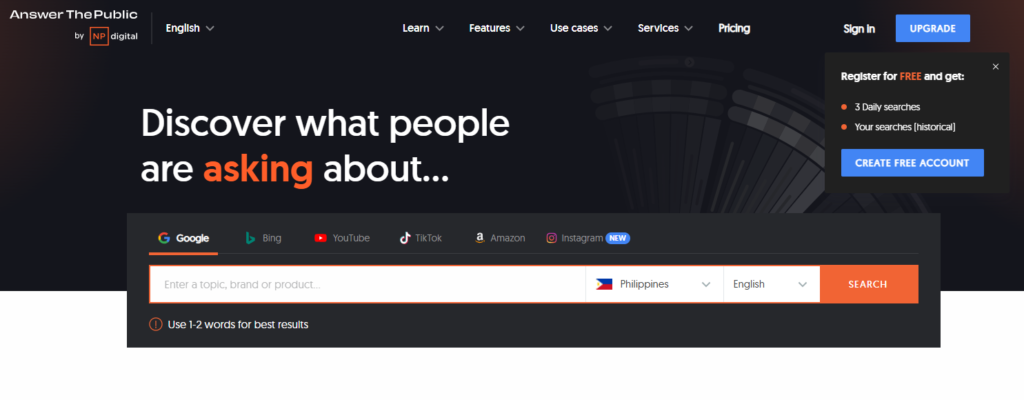
Have you ever thought about creating an online course but felt overwhelmed by the process? Thousands of content creators and influencers just like you are turning their expertise into profitable online courses. And the best part? You don’t need to be a tech guru or have a degree in education to do it. With the right strategies, tools, and mindset, you can create an online course that not only helps others but also builds a sustainable income stream.
“The secret of getting ahead is getting started.” — Mark Twain
In this post, we’ll dive deep into how you can create an online course, even if you’re completely new to the idea. We’ll explore strategies for building a course that resonates with your audience, step-by-step instructions to guide you through the process, and tips on how to avoid common mistakes. Whether you’re an influencer with a large following or a content creator just starting out, you’ll find everything you need to turn your knowledge into an engaging and profitable course.
TL;DR
- Identify your niche: Focus on the topic you’re most passionate about and find a unique angle to teach.
- Validate your idea: Reach out to your audience and ensure there’s a demand for the course.
- Create a structure: Outline your course into digestible modules and lessons.
- Choose the right tools: Leverage platforms like Teachable, Thinkific, or Kajabi.
- Market your course: Use social media, email lists, and collaborations to promote your course.
- Monetize smartly: Offer tiered pricing, bundles, or exclusive content to maximize profits.
How to Create an Online Course for Content Creators and Influencers
Ever thought about turning your expertise into a profitable online course? As a content creator or influencer, you already have an audience that trusts your knowledge and insights. Now, imagine helping them even further while building a sustainable income stream. Creating an online course is one of the most effective ways to do just that. Whether you’re a beauty guru, a fitness coach, or a social media expert, the skills and knowledge you’ve developed can be packaged into a course that others are eager to buy.
Let’s dive into the first step of the process: identifying your niche and audience.
Identify Your Niche and Audience
Creating an online course starts with one critical question: What do you know that others want to learn? As a content creator or influencer, your audience already looks to you for advice and inspiration. Whether you’re known for your Instagram photography, YouTube makeup tutorials, or expertise in personal branding, there’s a wealth of knowledge you can share. The key is to focus on what you’re passionate about and what your audience is most interested in learning from you.
Actionable Step:
Narrow down your focus. Instead of creating a broad course like “How to Do Makeup,” which might be overwhelming and already saturated, consider a niche topic that targets a specific audience. For example, if you’re a beauty influencer, create a course like “Mastering Natural Makeup for Beginners.” This unique angle makes your course stand out and helps you attract a specific set of students, rather than trying to appeal to everyone.
Tool Tip:
Use tools like Google Trends or AnswerThePublic to research what people are searching for in your niche. These tools can help you identify topics your audience is most interested in, allowing you to validate your course idea before you even start building it. This step is critical to ensuring that there’s a demand for the course you want to create.

Pro Tip:
Don’t worry if your niche feels small. Niches are powerful. According to a 2023 report by Teachable, courses that catered to highly specific audiences were 40% more likely to succeed than broad, generic courses. Why? Because niche courses speak directly to the needs of a particular group, making them more valuable and attractive.
Validate Your Course Idea
Before diving headfirst into creating hours of content, it’s essential to first validate your course idea. Too many course creators skip this step, only to find out later that there’s little interest in their offering. Course validation helps you avoid wasting time and resources on a project that may not resonate with your audience.
Actionable Step:
Survey your audience and ask them directly what they think about your course idea. Use Instagram polls, YouTube comments, or a quick email blast to gather feedback. Some effective questions to ask include:
- “Would you be interested in a course on [insert topic]?”
- “What’s the biggest challenge you face when it comes to [your niche]?”
- “What would you like to learn more about in [your niche]?”
This feedback will not only validate your idea but may also provide insights into exactly what your audience wants to learn, helping you refine your course content.
Statistics Matter:
According to a 2024 Thinkific report, 73% of successful course creators validate their course ideas before developing content. This simple step can dramatically increase your chances of success. By understanding what your audience really wants, you’ll be able to create a course that is more likely to sell.
Bonus Tip:
To further validate your course concept, consider creating a beta version of your course and offering it at a discounted price to a small group of students. Their feedback will help you refine the full version of your course, and you’ll already have testimonials to boost your future marketing efforts.
Create a Course Outline
Once you’ve validated your idea, it’s time to structure your course. Think of your course as a journey that your students will take—from beginner to expert (or wherever you aim to guide them). Every successful online course is divided into modules and lessons that build on each other. This structure helps students learn progressively, without feeling overwhelmed by too much information at once.
Actionable Step:
Break your course down into modules that cover different aspects of the topic. For each module, create smaller, bite-sized lessons that are easy to digest. For example, if your course is about social media growth, your outline might look like this:
- Module 1: Setting Up Your Social Media Accounts
- Module 2: Creating Engaging Content
- Module 3: Building an Engaged Audience
- Module 4: Monetizing Your Social Media Platforms
Each module should have clear learning outcomes and be broken down into smaller segments like video tutorials, worksheets, or quizzes.
Tool Tip:
Use organization tools like Trello or Notion to map out your course content. These tools allow you to visually arrange your course modules and lessons, making it easier to see how everything fits together. You can also track your progress and ensure no key lessons are missing from your course.
Pro Tip:
Keep your lessons short and focused. Research shows that learners retain more information when lessons are broken down into smaller, manageable chunks. A 2023 study by Coursera found that courses with lessons under 15 minutes had a 25% higher completion rate than longer lessons.
Choose the Right Platform
You don’t need to build a custom website to host your online course. There are many user-friendly platforms designed specifically for course creators, allowing you to upload your content, manage students, and track their progress with ease.
Popular Platforms:
- Teachable: Known for its flexibility and robust customization options, Teachable allows you to create a polished online course with minimal effort. It’s perfect for creators who want a lot of control over branding and design.
- Thinkific: Great for beginners, Thinkific offers an intuitive drag-and-drop course builder. It’s incredibly easy to use, even if you’re not tech-savvy.
- Kajabi: A premium platform that’s ideal if you want to scale your course business. Kajabi includes additional features like marketing automation, making it a good choice for influencers who want to handle everything from one platform.
Actionable Step:
Test different platforms before committing. Most course platforms offer free trials, so take advantage of this to explore each one’s features. Find the one that best fits your needs and preferences.
Bonus Tip:
If you’re on a tight budget, consider starting on Udemy or Skillshare. These platforms don’t require upfront costs and can expose your course to a broader audience. However, keep in mind that you’ll have less control over pricing and branding compared to stand-alone platforms like Teachable or Kajabi.
Create Engaging Content
Now comes the fun part—creating the content for your course. Your audience is used to seeing engaging, high-quality content from you on social media, so your course materials should feel just as polished and professional. The key here is to mix up your media and keep your students engaged with a variety of formats.
Actionable Step:
Diversify your content types to cater to different learning styles. While video is often the go-to format for online courses, consider adding:
- Downloadable PDFs or worksheets for students to follow along.
- Quizzes at the end of each module to reinforce learning.
- Live Q&A sessions to provide real-time support and build community.
By offering a mix of content formats, you can keep your students engaged and ensure they’re absorbing the material.
Tool Tip:
Use Canva to create visually appealing course materials like workbooks, slides, or infographics. Canva is beginner-friendly and offers plenty of templates to get you started.
Pro Tip:
If you’re creating video content, don’t feel like you need high-end equipment right away. Many successful course creators start with just their smartphone and a good microphone. As you grow, you can invest in better equipment, but don’t let lack of gear stop you from getting started.
If you’re looking to leverage AI in your course creation process, don’t miss the “AI Content Generator Masterclass | Part 1 (Foundation)”. This video provides foundational insights into using AI-powered content generation tools, enabling you to streamline your course creation and optimize your content for better engagement. It’s an essential resource for creators who want to explore AI-driven workflows in their content production.
For More Free Videos, Subscribe to the Rhodes Brothers YouTube Channel.
Market Your Course Like a Pro
Even if your course is packed with value, it won’t sell if nobody knows about it. Fortunately, as a content creator or influencer, you already have a built-in advantage: your audience. Now it’s time to leverage your existing platforms to market your course effectively.
Actionable Step:
Run a pre-launch campaign to build anticipation. Before your course goes live, start teasing it to your audience by sharing behind-the-scenes content, sneak peeks, or offering early-bird discounts. Use Instagram Stories, YouTube videos, or email newsletters to drum up excitement well in advance of the launch date.
Statistics Matter:
According to a 2024 report by Podia, creators who run pre-launch campaigns generate 50% more revenue compared to those who launch without any build-up. By creating buzz before your launch, you’ll have a group of eager students ready to enroll as soon as your course is available.
Bonus Tip:
Collaborate with other influencers or content creators in your niche to broaden your reach. You could offer them affiliate commissions for promoting your course or even co-create a bonus module that adds extra value for students who sign up.
Monetize Smartly
Charging a flat fee for your course is just the beginning. There are multiple ways to maximize your earnings and provide extra value to your students.
Actionable Step:
Offer tiered pricing to appeal to a wider audience. For example, you could offer:
- A basic course for $99 that includes all the video lessons.
- A premium version for $299 that includes one-on-one coaching or personalized feedback on assignments.
Create bundles** by packaging your course with other exclusive content. For example, you could bundle your course with downloadable templates, an eBook, or access to a private group where students can connect and ask questions.
Tool Tip:
Platforms like Gumroad or SamCart make it easy to set up different pricing tiers and manage sales. These tools allow you to offer upsells, bundles, and discounts with minimal effort, maximizing your course’s profitability.
Pro Tip:
Don’t forget about recurring revenue. Consider offering a membership model where students pay a monthly fee for ongoing access to new content, group coaching, or a private community. This not only provides continuous value to your students but also creates a steady income stream for you.
Actionable Steps for Creating an Online Course for Content Creators and Influencers
Creating an online course offers a fantastic opportunity to share your expertise and generate income, but the approach should be tailored to different demographics. Below, you’ll find step-by-step advice for beginners, millennials, and people nearing retirement, focusing on how to create and market a course that resonates with each group.
Beginners
For beginners, it’s essential to focus on foundational skills that are easy to understand and actionable. A course like “Instagram Basics for Beginners” would resonate well with this group, as it offers a clear, achievable goal. When validating your course idea, beginners can leverage simple social media tools like polls or surveys to gauge interest, asking questions like “Would you be interested in a course on [topic]?” This helps ensure there’s demand before diving into course creation. The course outline should be straightforward, with step-by-step modules that lead to a clear result, such as “Setting Up an Instagram Account.” Beginners should start with accessible platforms like Teachable or Udemy, which offer easy setups with minimal upfront costs. For content creation, focus on short, engaging video tutorials paired with worksheets, keeping lessons under 10 minutes to avoid overwhelming your audience. Marketing can be done organically through Instagram Stories or YouTube, where you can offer early-bird pricing to attract initial sign-ups. As for monetization, keep it simple with one price point, ideally between $49 and $99, to build confidence and attract sales quickly.
Millennials
For millennials, the focus shifts toward personal development or side-hustle skills that can enhance their careers or passions. A course like “Monetizing Your Blog in 30 Days” would be highly appealing. Millennials can validate their course ideas by offering a free mini-course or webinar, which allows them to gauge interest and collect feedback to refine their offerings. When creating a course outline, provide deep dives into strategies or hacks that can be applied quickly, such as “Growing Your Email List with Lead Magnets.” In terms of platforms, Podia or Kajabi are ideal choices, as they offer integrated marketing tools and membership options, making them perfect for scaling a course business. Millennials benefit most from diverse content that includes videos, quizzes, and downloadable resources to keep engagement high. For marketing, leveraging Facebook Ads and email marketing campaigns is key to reaching a broader audience and converting them into paying students. When it comes to monetization, offering tiered pricing can increase revenue. For example, offer a basic course at $99 and a premium version with added bonuses, such as one-on-one coaching or exclusive content, for $299.
People Nearing Retirement
For people nearing retirement, course creation should focus on life skills or hobbies that offer fulfillment or new income opportunities. A course like “Photography for Retirees: Capture Your Travel Memories” would resonate well with this demographic. To validate the course idea, retirees can use email newsletters or Facebook groups to ask what challenges they’d like to overcome or what new skills they’d be interested in learning. The course outline should be broken into easy-to-follow lessons with practical applications, such as “Editing Photos on Your Smartphone.” When choosing a platform, Thinkific is a great choice because it offers a user-friendly interface and straightforward setup, which is perfect for those who prefer simplicity. Content creation should focus on step-by-step video guides with downloadable PDFs for easy reference, ensuring that students can follow along at their own pace. Marketing should be community-driven, utilizing Facebook groups and email campaigns to tap into networks of like-minded individuals who are looking for new hobbies or skills in retirement. For monetization, keeping pricing simple with a one-time fee for lifetime access can appeal to this demographic, as they are likely to prefer straightforward, no-frills pricing.
By targeting your course to the specific needs and behaviors of your demographic, you’ll create a product that resonates deeply and provides real value to your audience. Whether you’re a beginner, a millennial, or someone nearing retirement, these tailored strategies will help ensure your course is both engaging and profitable.
Common Mistakes to Avoid When Creating an Online Course
While creating an online course can be incredibly exciting and rewarding, many first-time creators fall into common traps that can derail their success. Avoiding these pitfalls is key to building a course that not only resonates with your audience but also generates consistent sales. Below are some typical mistakes—and actionable strategies to avoid them.
Creating Without Validating
One of the biggest mistakes new course creators make is jumping straight into course production without first confirming that there’s demand for the topic. You might be passionate about a subject, but if your audience isn’t interested or willing to pay for it, your course might struggle to gain traction.
Solution:
Always validate your course idea before you start creating content. This can be as simple as running a poll on your social media channels, sending a survey to your email list, or even hosting a free webinar on the topic. The goal is to gauge audience interest and ensure there’s a real demand for the course. You can ask questions like:
- “What’s your biggest challenge when it comes to [your course topic]?”
- “Would you be interested in a detailed course on [specific topic]?”
Additionally, offering a beta version of your course to a smaller group of early adopters at a discounted rate is a great way to gather feedback and make improvements before a full-scale launch. Not only does this give you confidence in your topic, but it also allows you to collect testimonials for future marketing efforts.
Overstuffing the Course
Another common mistake is trying to pack too much information into the course. While it’s tempting to share everything you know, overloading your content can overwhelm your students, making it harder for them to absorb the material. Information overload can lead to low completion rates, negative feedback, and fewer recommendations.
Solution:
Keep lessons short, focused, and actionable. Bite-sized content is easier to digest and helps students make steady progress. Instead of cramming multiple concepts into one long video or module, break your course down into smaller, manageable chunks:
- Stick to one key takeaway per lesson.
- Keep videos under 10–15 minutes when possible.
- Incorporate short quizzes or exercises to reinforce learning.
Think about your course as guiding students through a journey. Start with basic concepts, and progressively build up to more advanced topics, ensuring that each module builds upon the last. This way, your students can apply what they learn step by step, which increases retention and satisfaction.
Not Marketing Enough
Many first-time course creators assume that once the course is built, it will sell itself. Unfortunately, even the most valuable course can fail if no one knows it exists. Focusing too much on course creation and not enough on marketing is a common pitfall that leads to underwhelming sales.
Solution:
Invest time and effort in a solid marketing strategy. Your course launch should be treated like an event, with a planned pre-launch, launch, and post-launch strategy. Here’s how to execute a strong marketing plan:
- Pre-launch: Start building anticipation weeks or months in advance. Share sneak peeks, behind-the-scenes content, and testimonials from beta testers. Consider offering an early-bird discount to generate excitement.
- Launch: During the launch phase, use all of your platforms—email marketing, social media, and even paid ads if your budget allows. Share your personal journey and how your course can solve your audience’s pain points.
- Post-launch: Continue promoting your course after the launch. Use student testimonials and success stories to build social proof, and keep your audience engaged with updates or bonus content.
Marketing doesn’t stop after the launch. Always have a plan for ongoing promotion, such as running webinars, collaborating with influencers, or offering seasonal discounts.
Relying on Only One Marketing Channel
Focusing on one marketing method—like Instagram or just your email list—limits your reach and puts your course at risk if that method underperforms or becomes less effective. A diverse marketing strategy is essential for reaching different audience segments and maximizing course sales.
Solution:
Diversify your marketing efforts across multiple platforms to ensure you’re reaching your audience wherever they are most active. Consider using a combination of the following:
- Email Marketing: Build and nurture your email list with free, valuable content (e.g., lead magnets, blog posts, or webinars). Email is still one of the most effective ways to sell courses.
- Social Media: Use platforms like Instagram, YouTube, TikTok, or LinkedIn to share bite-sized content, testimonials, and behind-the-scenes glimpses of your course.
- Collaborations: Partner with other content creators or influencers in your niche. This not only expands your reach but also adds credibility to your course.
- Affiliate Marketing: Offer commissions to affiliates who promote your course to their own audiences. This strategy can significantly increase your reach without upfront costs.
- Paid Advertising: If you have the budget, consider running targeted ads on platforms like Facebook, Instagram, or Google to drive traffic to your landing page.
By leveraging multiple channels, you ensure that your course is always visible to potential students, no matter where they spend their time online.
Ignoring Student Feedback
It’s easy to get caught up in course creation and forget that the experience doesn’t end when students enroll. Ignoring student feedback can lead to missed opportunities for improvement and growth. First-time creators sometimes dismiss feedback or fail to collect it altogether, which can result in lower student satisfaction and fewer referrals.
Solution:
Actively seek feedback from your students throughout the course. This can be done through surveys, direct questions at the end of each module, or even in live Q&A sessions. Ask students what they found helpful, what they struggled with, and what could be improved. Not only does this show that you care about their experience, but it also gives you valuable insights to enhance future versions of your course.
Additionally, listening to feedback allows you to pivot if necessary. Perhaps certain lessons need more depth, or some content could be clearer. By making these adjustments and relaunching a refined version of the course, you increase your chances of success and create a better experience for all future students.
Underpricing Your Course
Many new course creators underprice their courses out of fear that no one will buy them. While it’s important to price your course competitively, undervaluing your content can hurt your credibility and leave money on the table. A low price point can also signal to potential students that your course lacks value.
Solution:
Price your course based on the value it delivers and the transformation it offers. If your course provides in-depth knowledge, actionable steps, and tangible results, don’t be afraid to charge accordingly. Research your competitors to see what they’re charging for similar courses, and consider offering tiered pricing options. For example:
- A basic version of the course at a lower price.
- A premium version with added bonuses, like one-on-one coaching, exclusive resources, or personalized feedback.
By pricing based on value rather than fear, you attract students who are serious about investing in their learning, which can lead to higher completion rates and more satisfied customers.
By being mindful of these common mistakes, you can create a course that not only meets your audience’s needs but also stands out in a crowded market. Validate your idea, keep your content clear and concise, invest in marketing, diversify your outreach, listen to feedback, and price your course based on value. With these strategies in place, you’ll be well on your way to creating a successful and profitable online course.
Frequently Asked Questions
How do I get started with creating an online course?
Start by identifying your niche and validating your idea with your audience. Once you have a clear topic, outline your course and choose a platform to host it.
What’s the best platform for beginners?
Thinkific and Teachable are great for beginners due to their user-friendly interfaces.
How long should my course be?
The length depends on the complexity of the topic, but aim for 5-10 modules with short, 10-15 minute lessons.
How much should I charge for my course?
It depends on your audience and the value you’re offering. On average, most creators charge between $50-$300 for online courses.
Do I need special equipment to make a course?
Not really! You can start with just a smartphone camera and a decent microphone. As you grow, you can invest in better equipment.
How do I market my course?
Leverage your social media channels, run a pre-launch campaign, and use email marketing to build interest.
Should I offer a money-back guarantee?
Yes, offering a 30-day money-back guarantee can increase your course sales by reducing risk for buyers.
How do I keep students engaged?
Offer a variety of content types like videos, quizzes, and downloadable resources. Also, consider adding live Q&A sessions or a community forum.
Can I create a course if I’m not an expert?
Yes! As long as you can teach something valuable and have a desire to help others, you can create a course.
How long does it take to create a course?
On average, it can take anywhere from 4-8 weeks to create a high-quality course, depending on how many lessons you’re creating.
Your Roadmap to Creating a Successful Online Course
Creating a successful online course is an achievable goal, no matter your experience level. The key steps to success include validating your course idea through audience feedback, structuring your content into digestible, focused modules, and investing in a well-rounded marketing strategy to get the word out. By avoiding common pitfalls like overstuffing your course or relying on just one marketing channel, you can significantly boost your course’s value and reach.
Now is the time to take action! Start by surveying your audience to validate your idea, or if you’re ready, begin outlining your course structure using the actionable tips from this guide. Remember, your expertise is valuable, and there’s an audience out there eager to learn from you.
Thank you for joining us in exploring the path to course creation! If you’re looking for even more insights, tutorials, and inspiration, make sure to check out and subscribe to the Rhodes Brothers YouTube Channel for the latest videos and strategies to help you succeed. Start your journey today!
Resource List
Books
- “Expert Secrets” by Russell Brunson
- “Launch” by Jeff Walker
- “The Lean Startup” by Eric Ries
- “Building a StoryBrand” by Donald Miller
- “Teach and Grow Rich” by Danny Iny
Online Courses
- “Create Awesome Online Courses” by David Siteman Garland
- “Podia Academy”
- “Digital Course Academy” by Amy Porterfield
- “Kajabi University”
Blogs
Podcasts
- “Online Marketing Made Easy” by Amy Porterfield
- “The Smart Passive Income Podcast” by Pat Flynn
- “The Membership Guys Podcast” by Callie Willows & Mike Morrison
- “The Copyblogger Podcast”
Tools & Platforms
Online Course Creation Cheat Sheet
- Validate your course idea before creating it.
- Use surveys or polls to gauge interest.
- Start with a specific niche.
- Outline your course with bite-sized lessons.
- Choose the right platform: Teachable, Thinkific, Kajabi, Podia, or Udemy.
- Create engaging content with videos, quizzes, and resources.
- Keep videos short and focused.
- Pre-launch your course to build anticipation.
- Market across multiple channels: email, social media, ads.
- Offer tiered pricing or bonuses for premium versions.
- Collect student feedback for improvements.
- Collaborate with influencers or creators.
- Use tools like Loom for recording and Canva for materials.
- Price your course based on the transformation it offers.
- Track success using Google Analytics or Hotjar.
- Offer lifetime access or payment plans.






